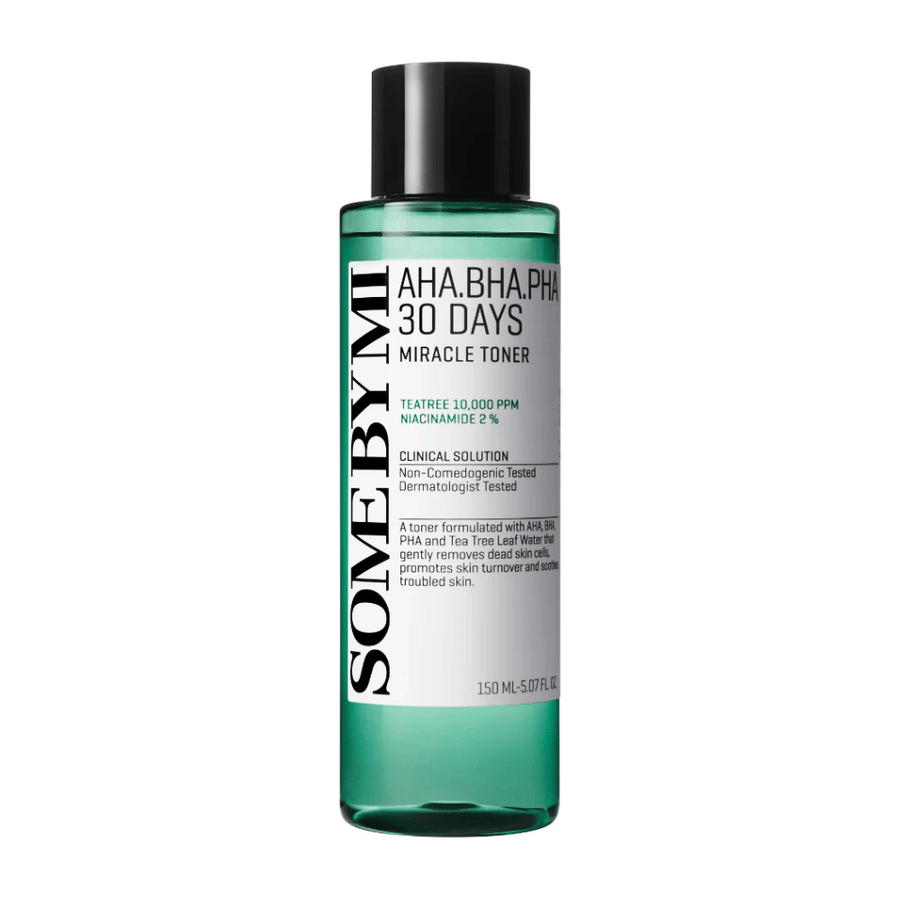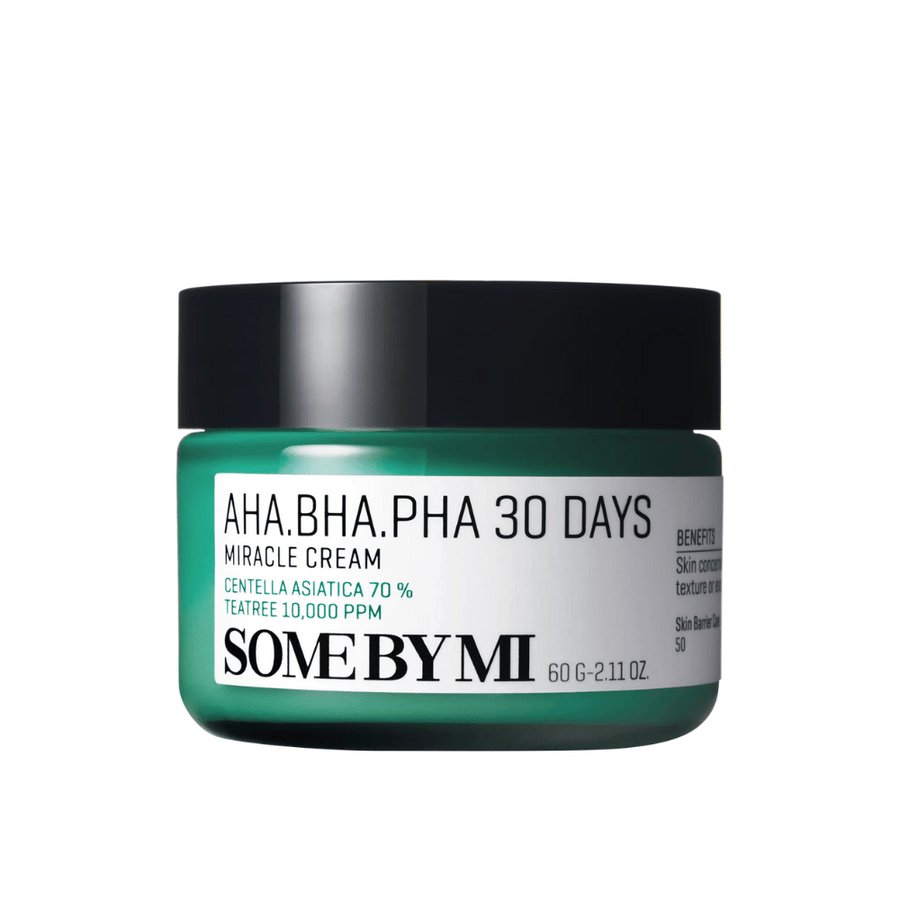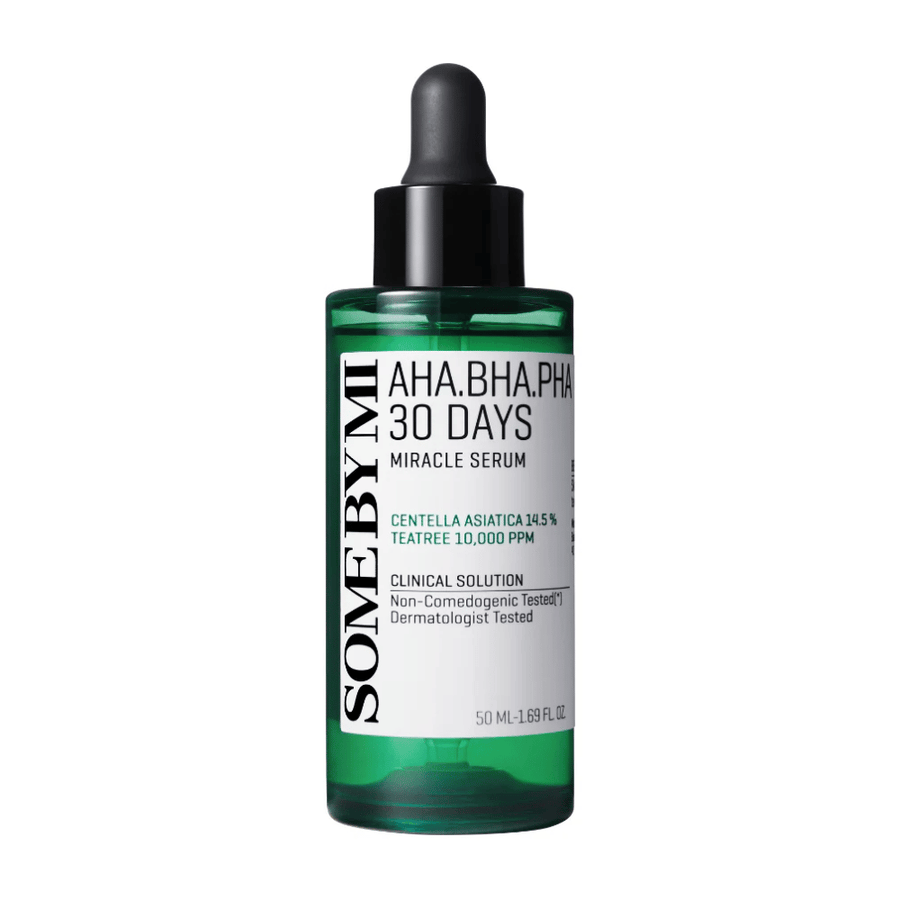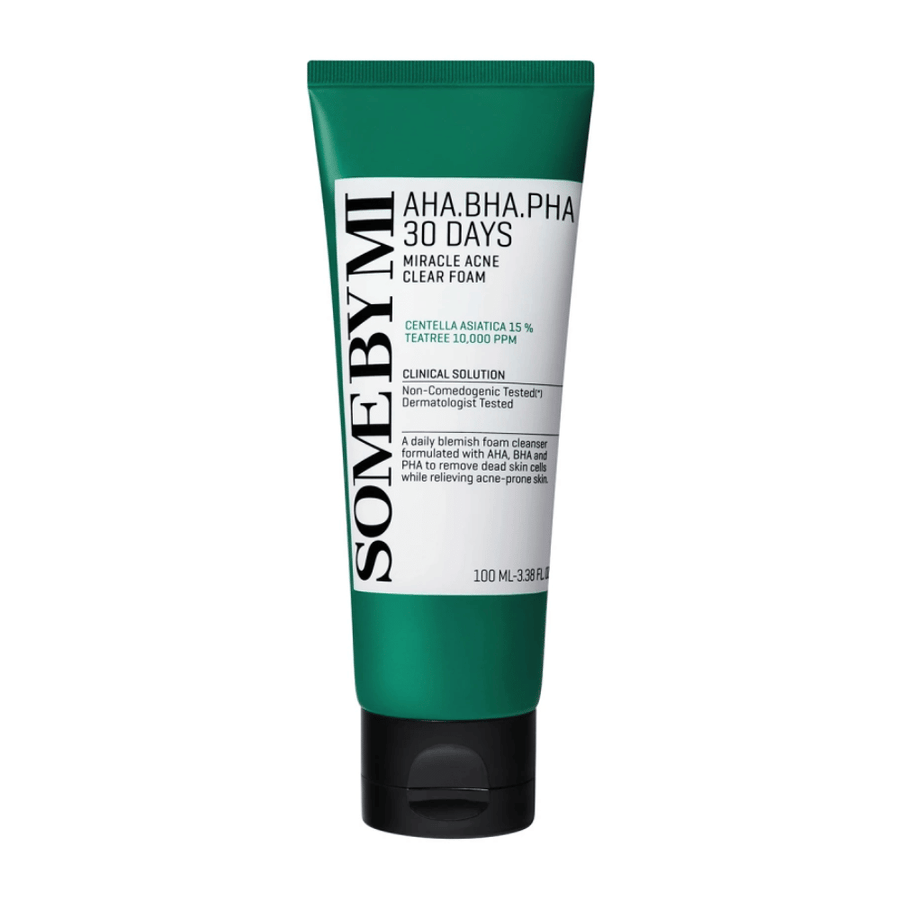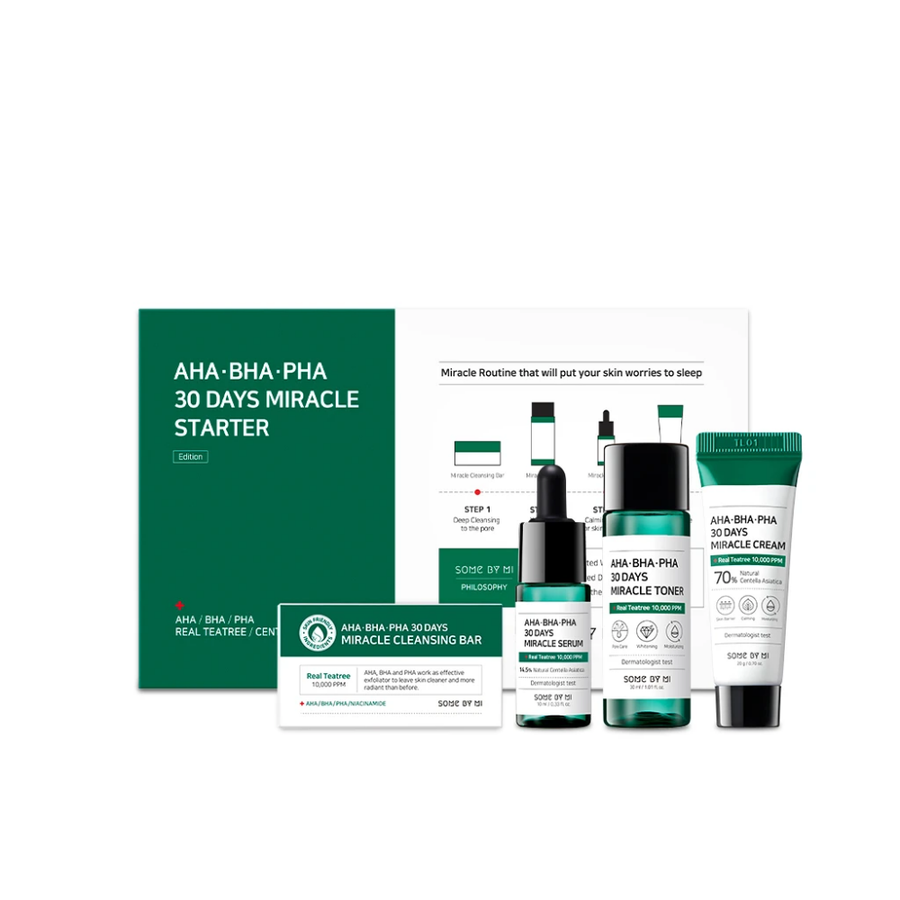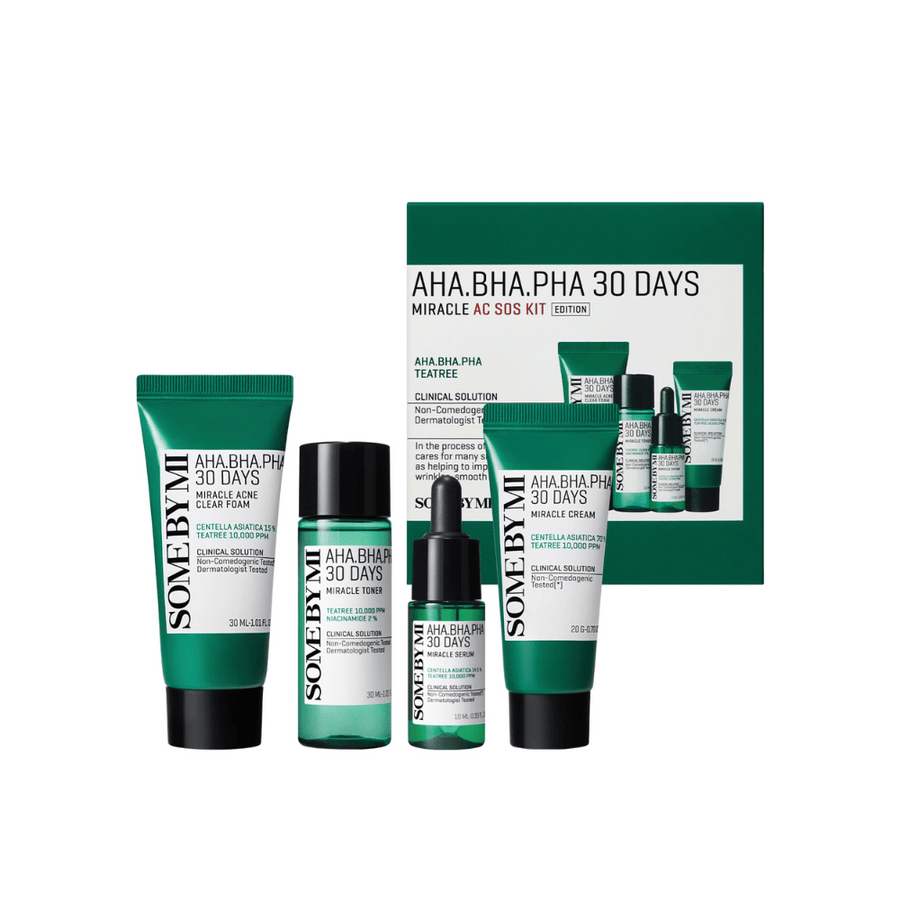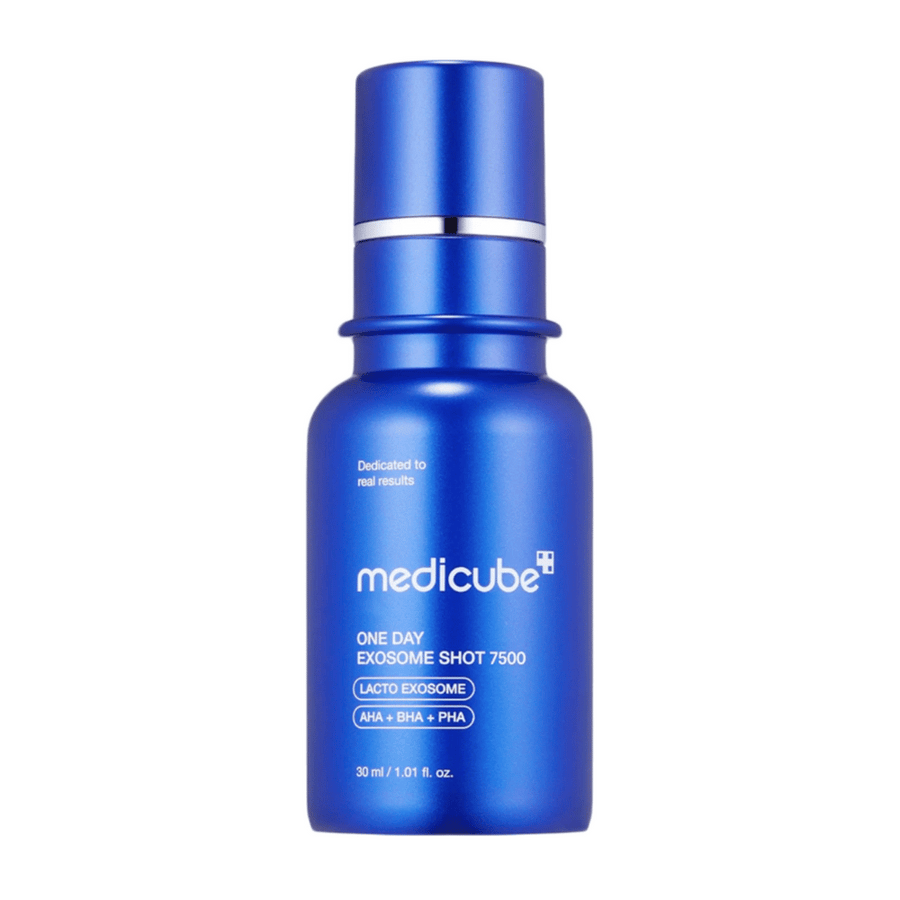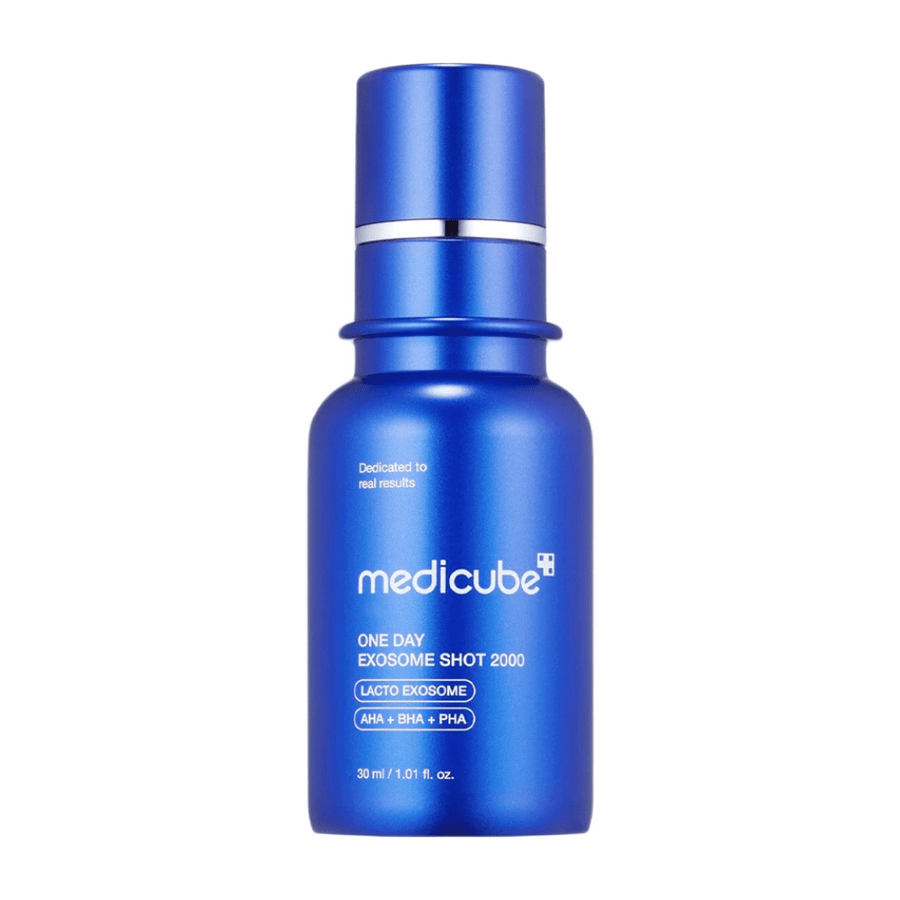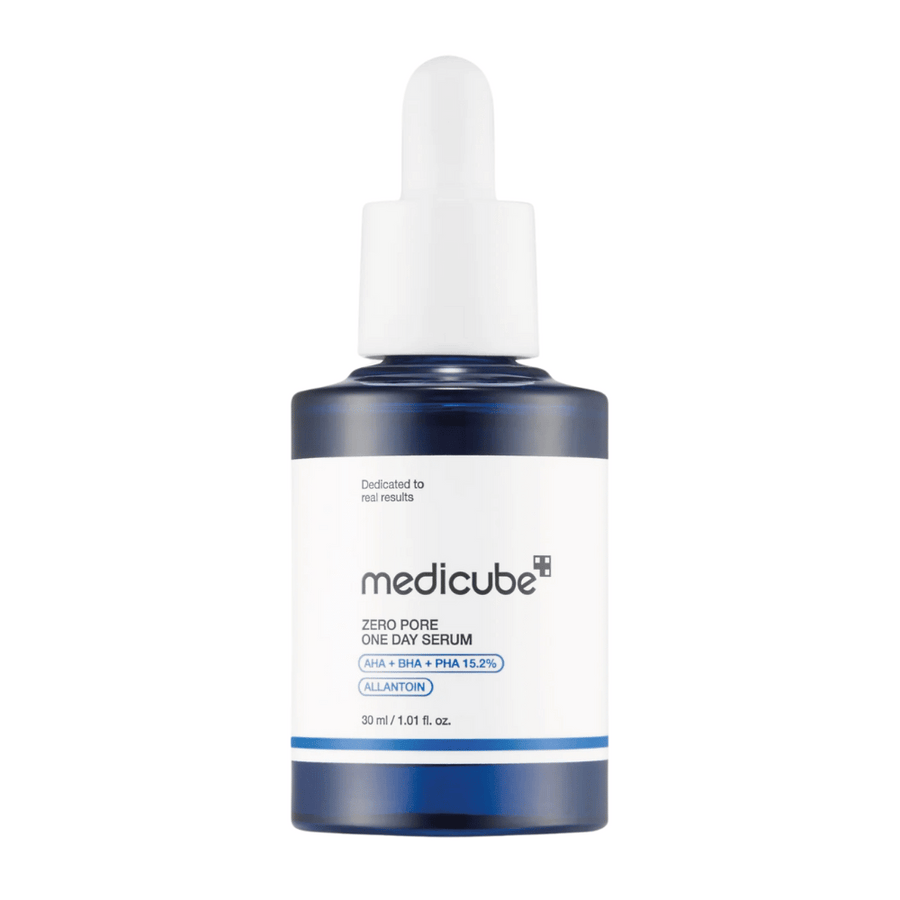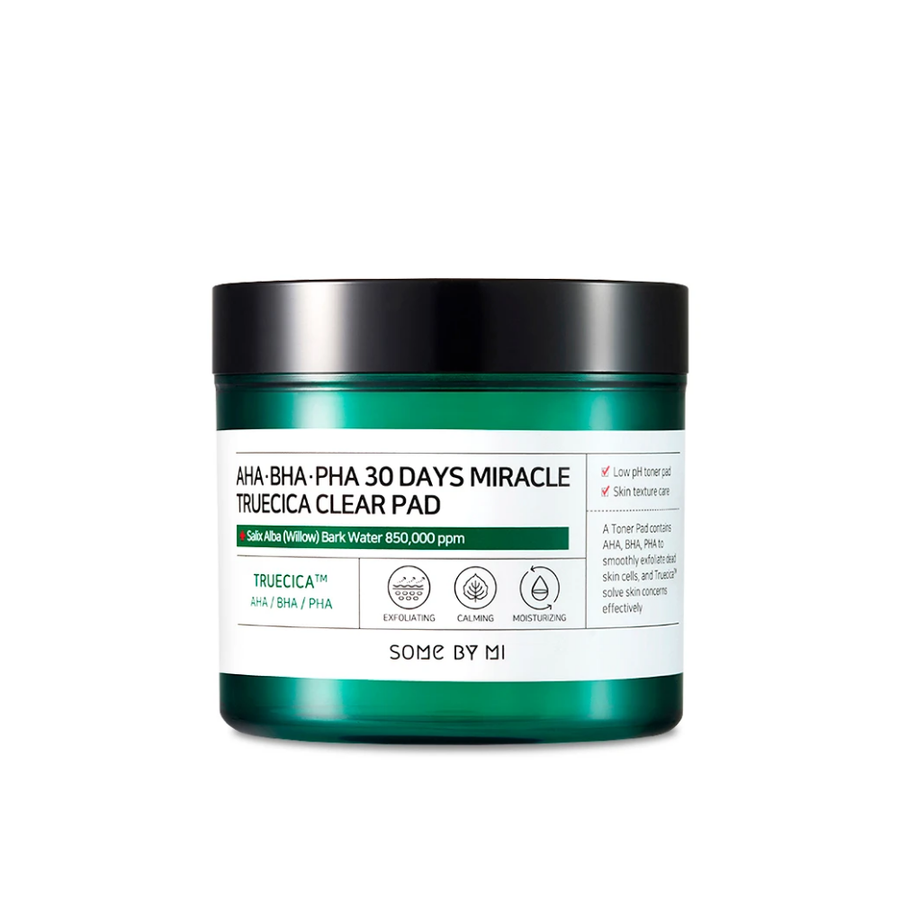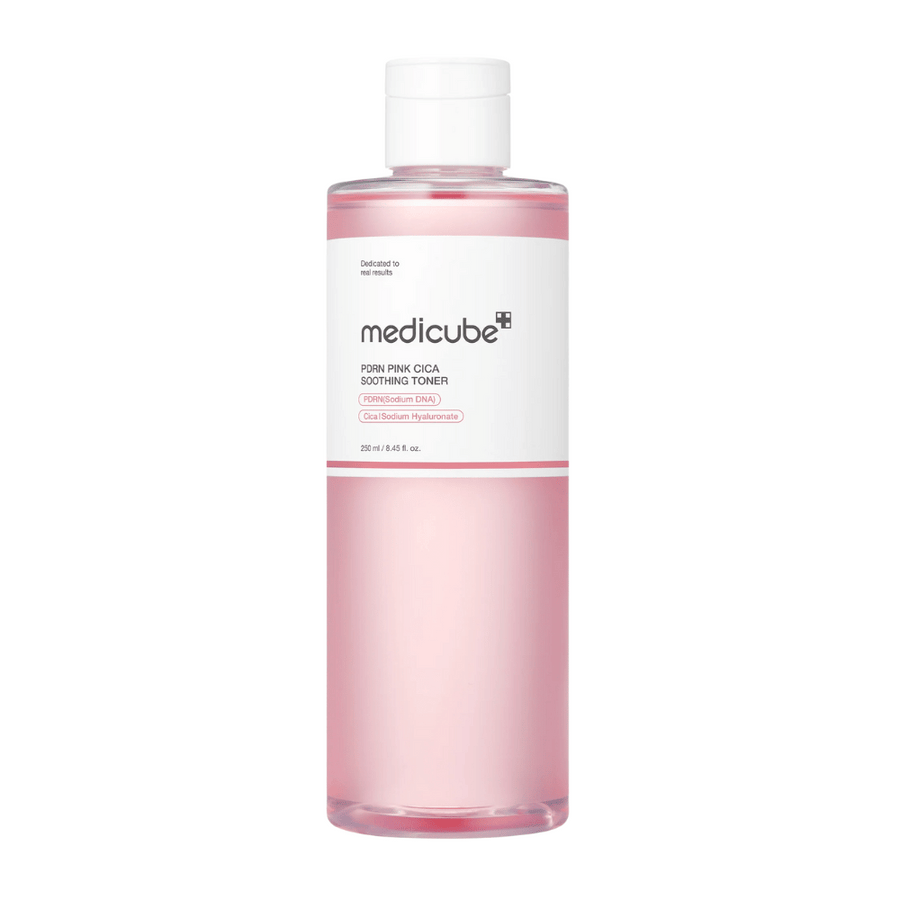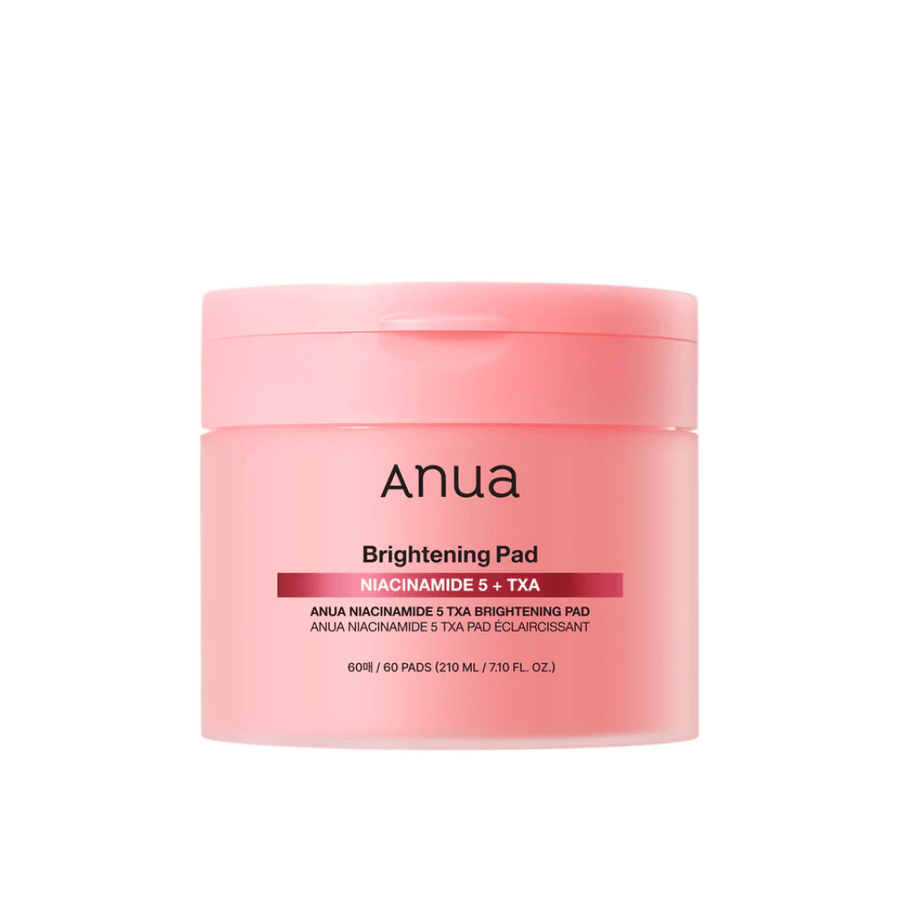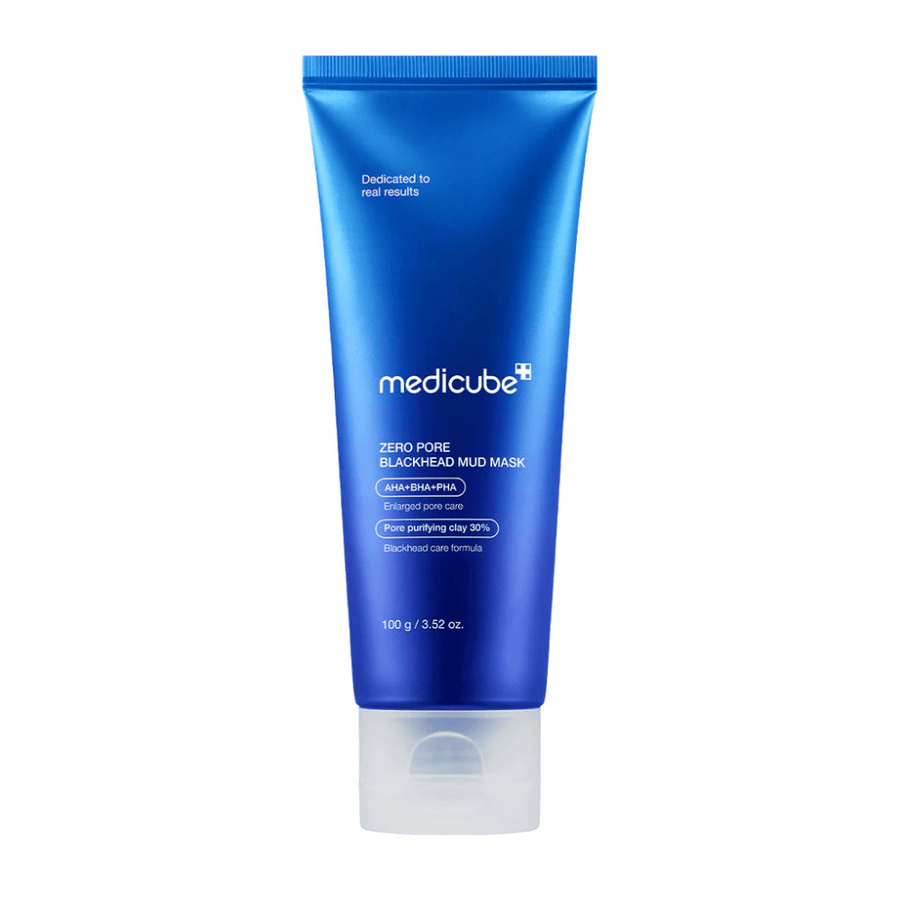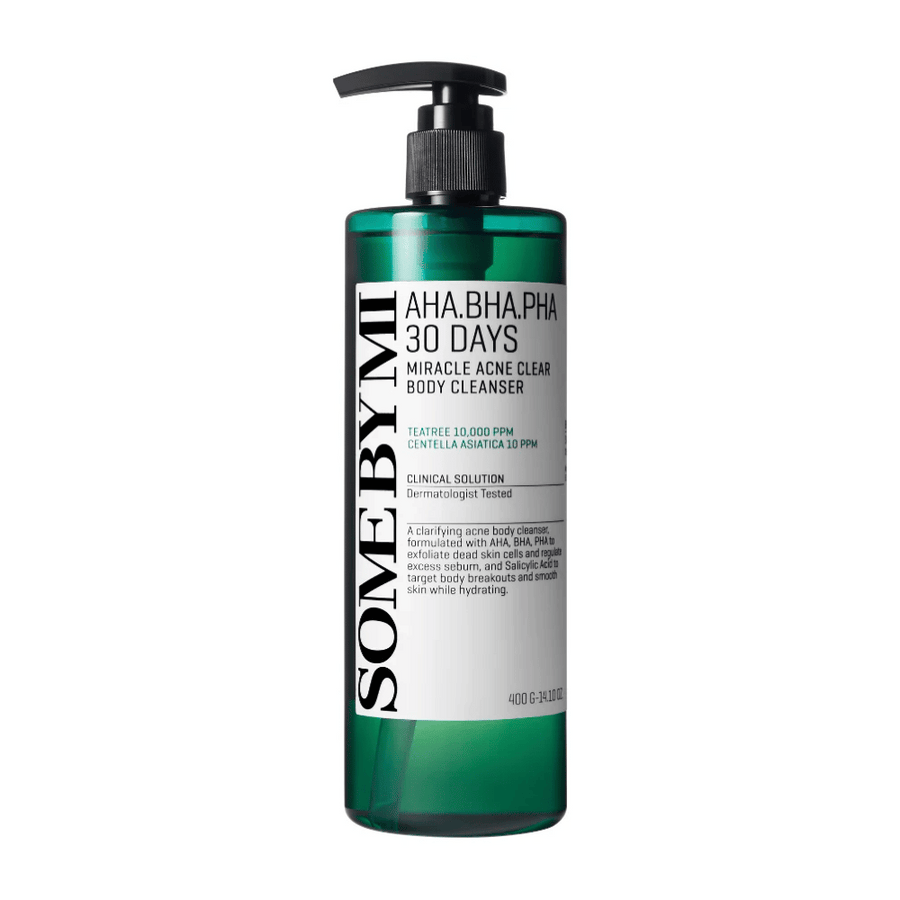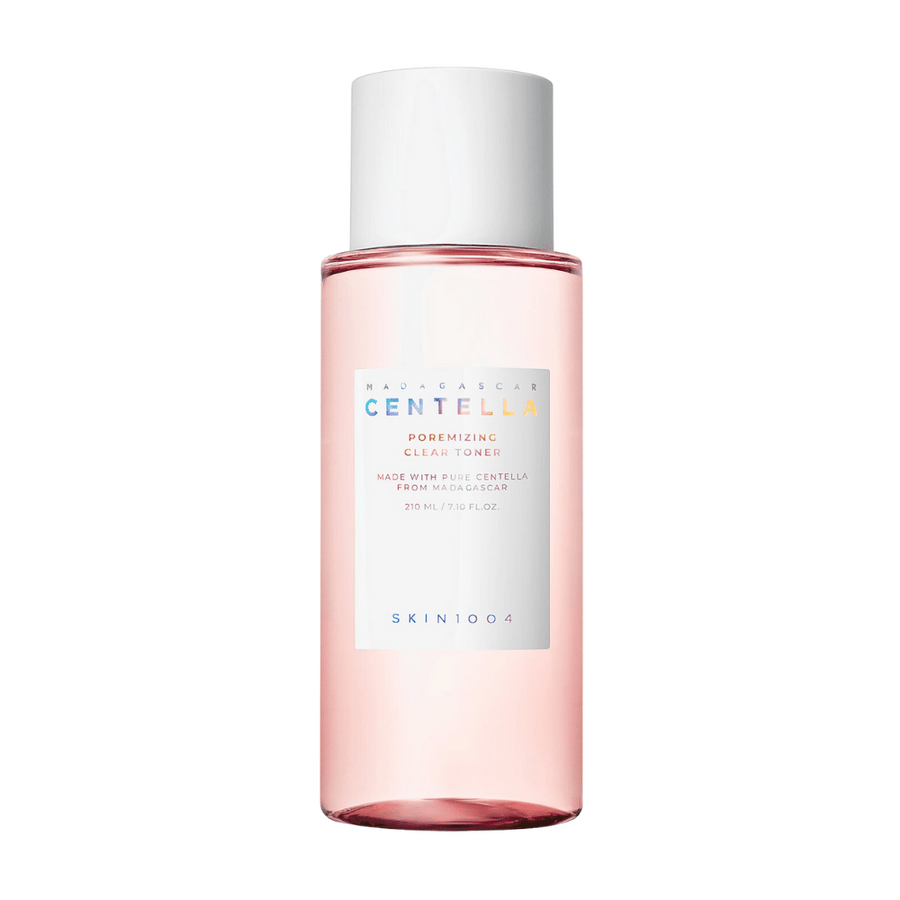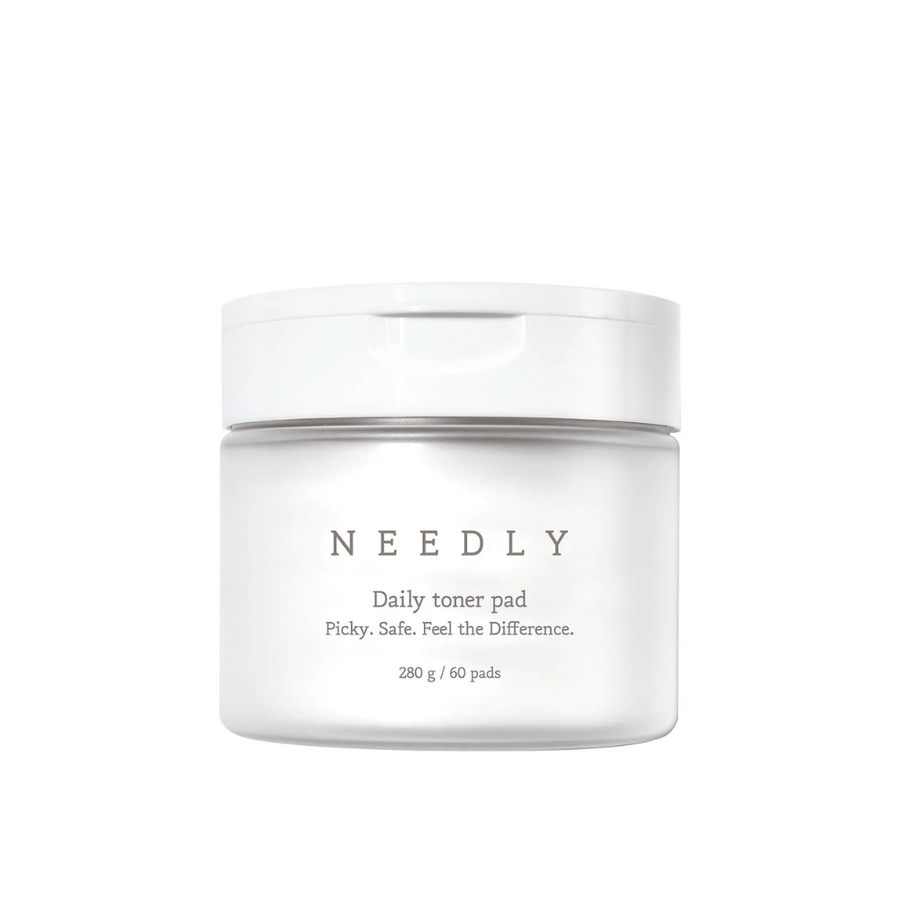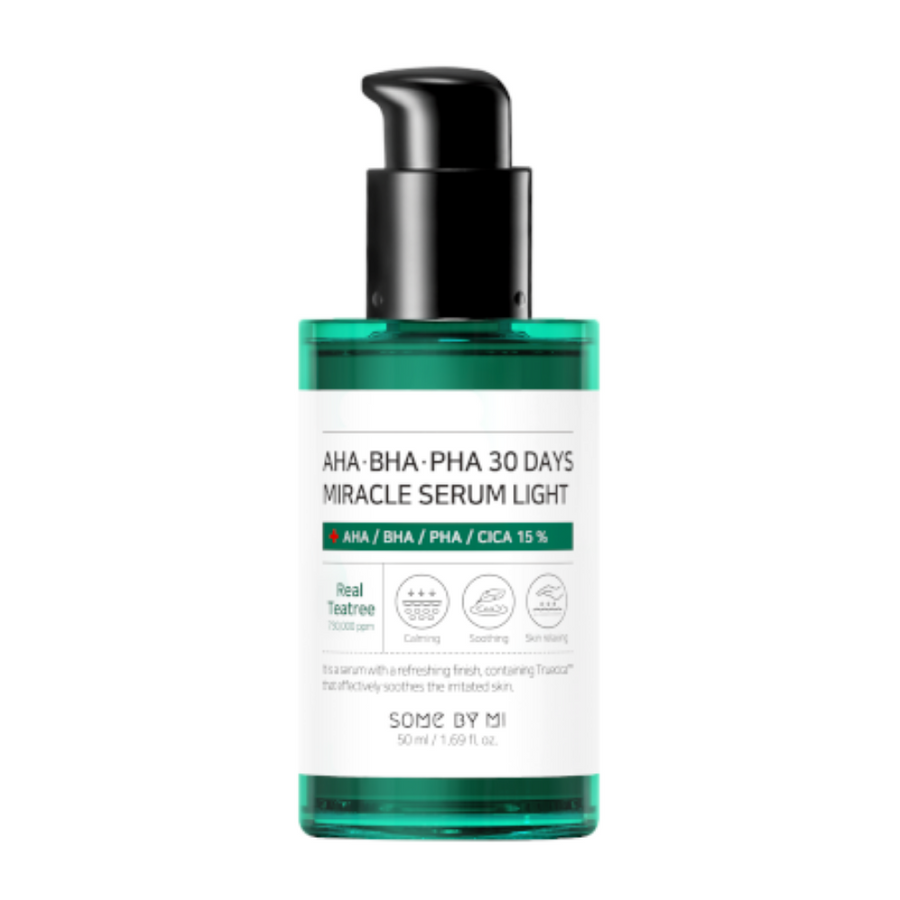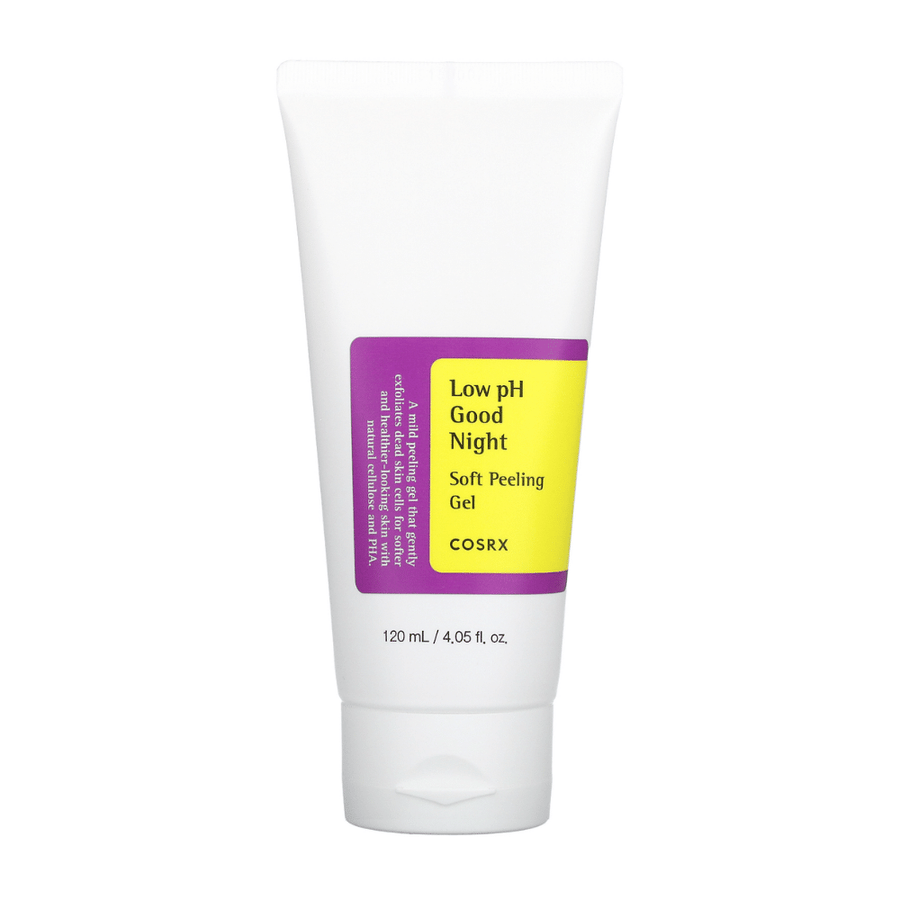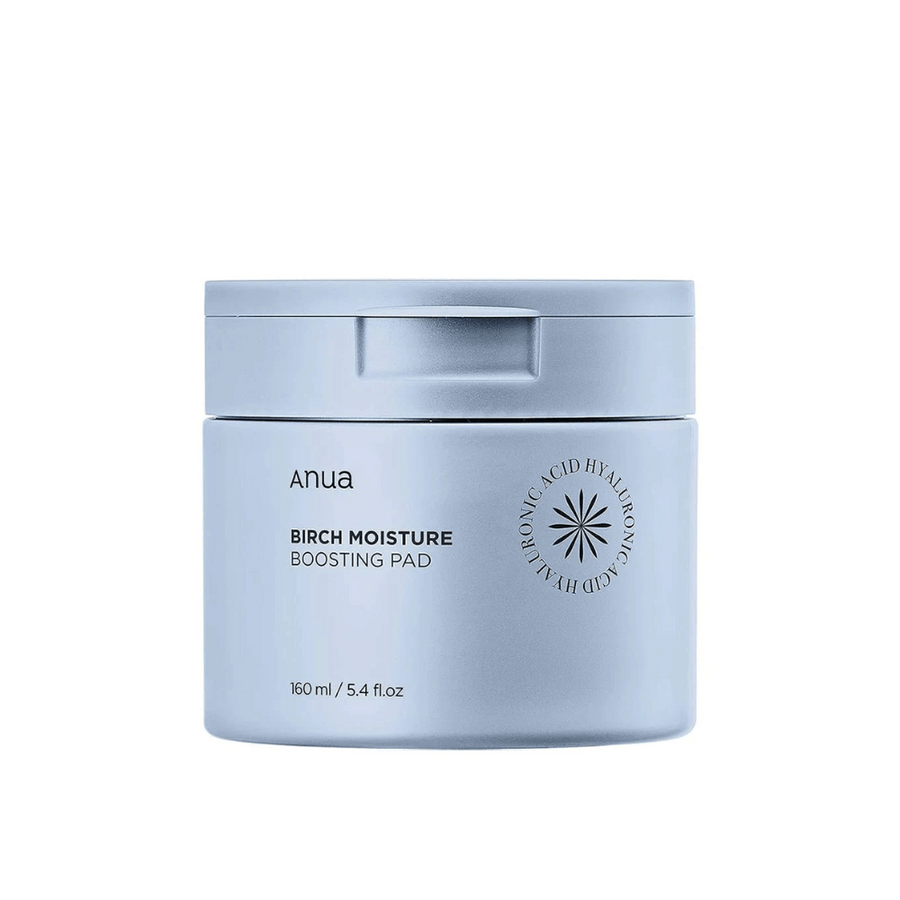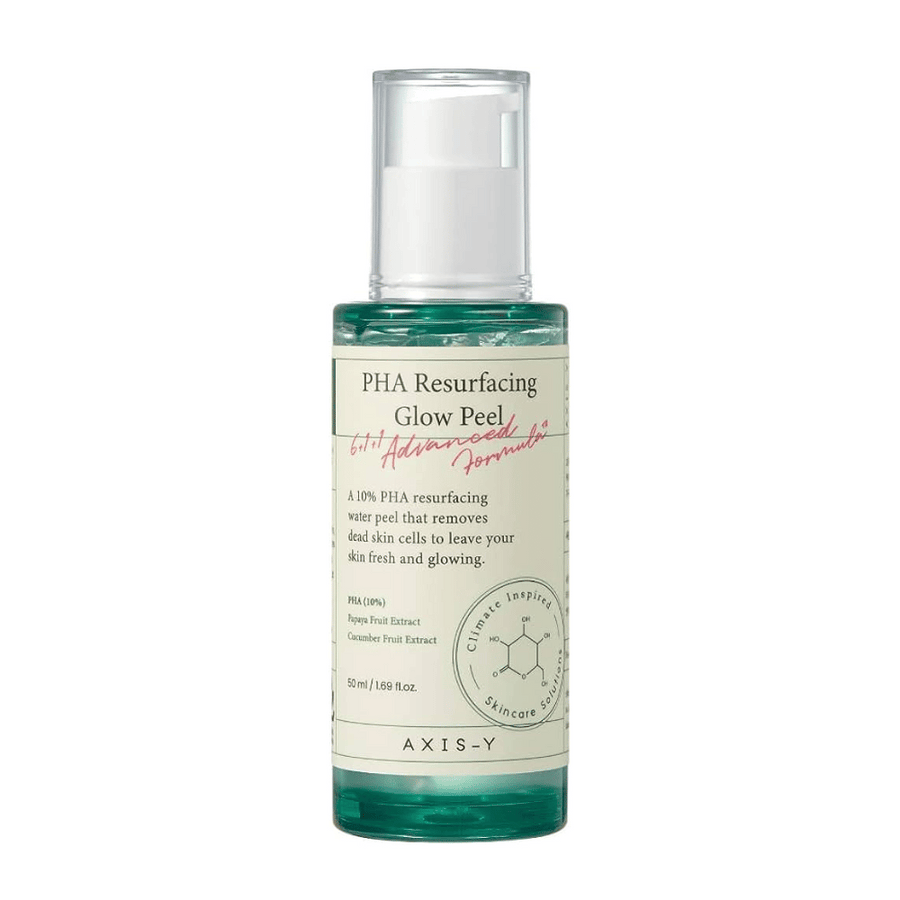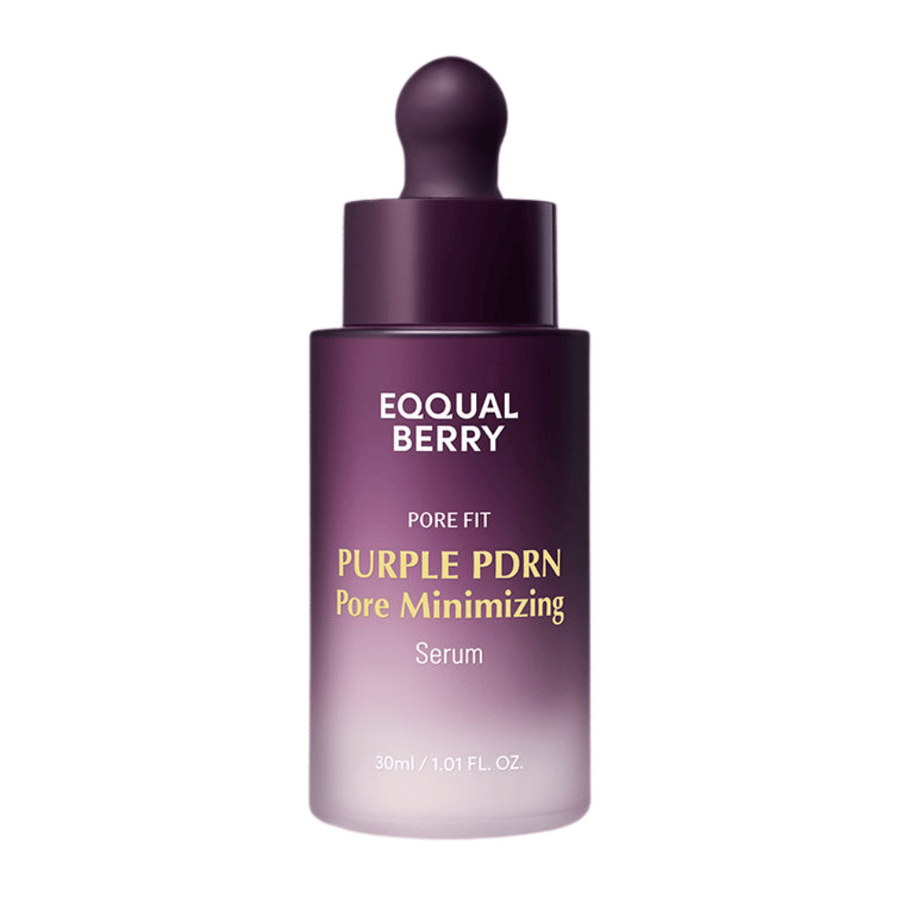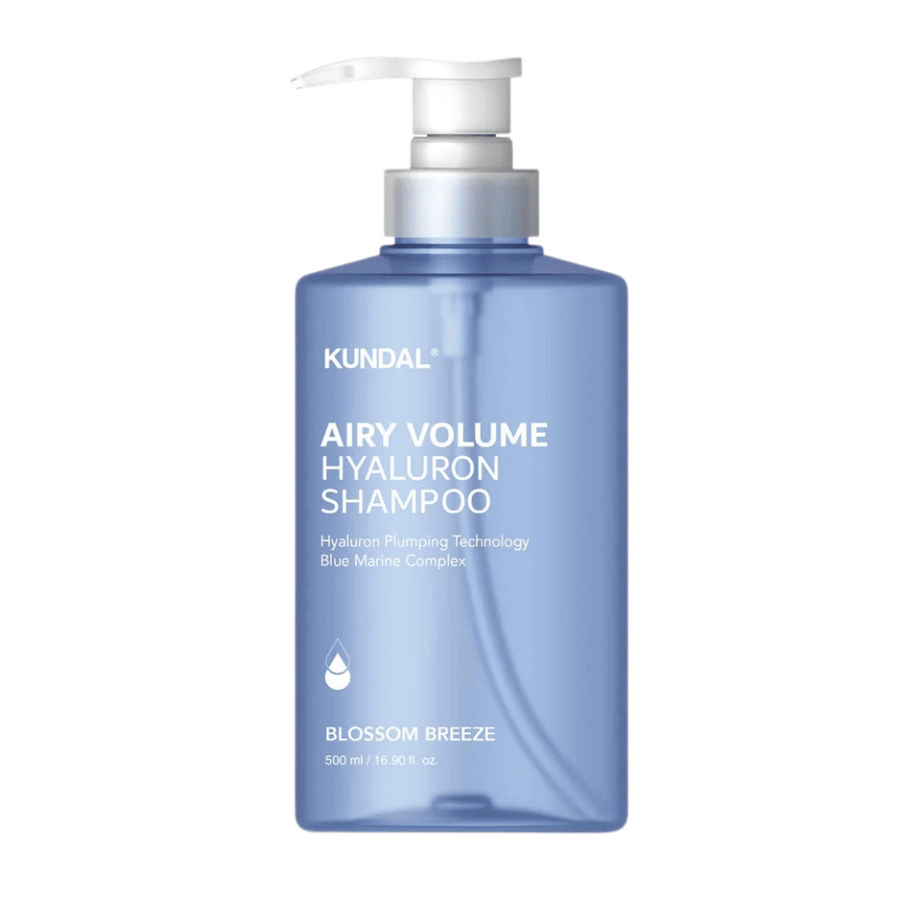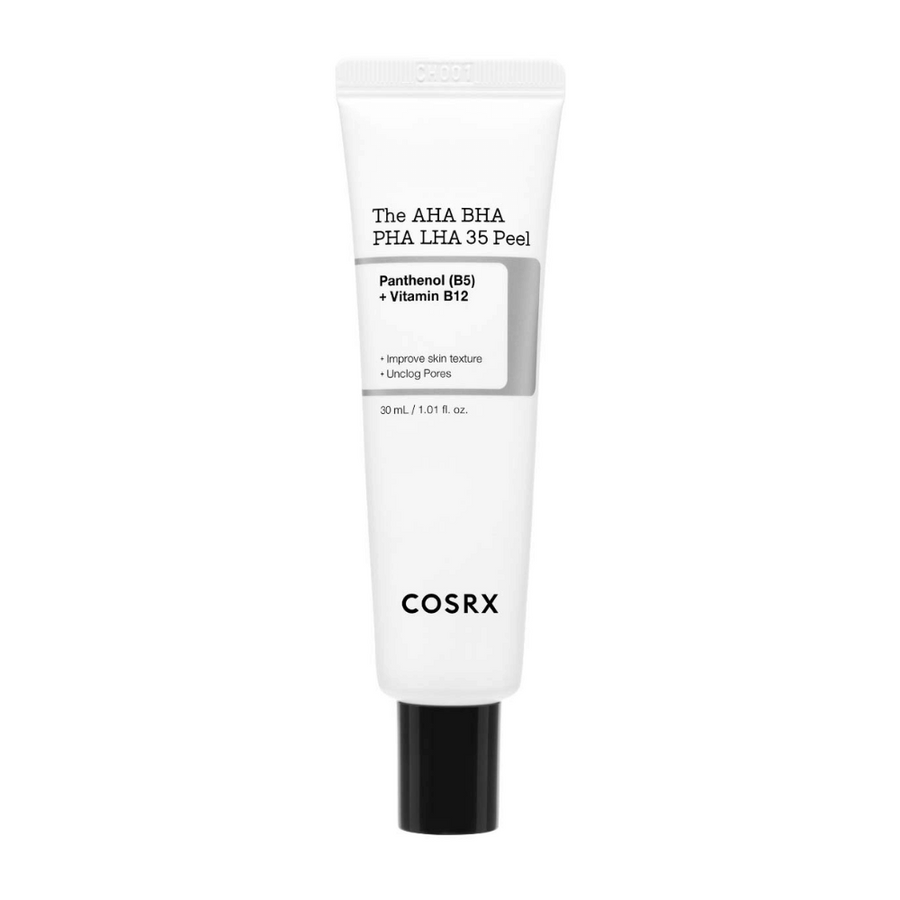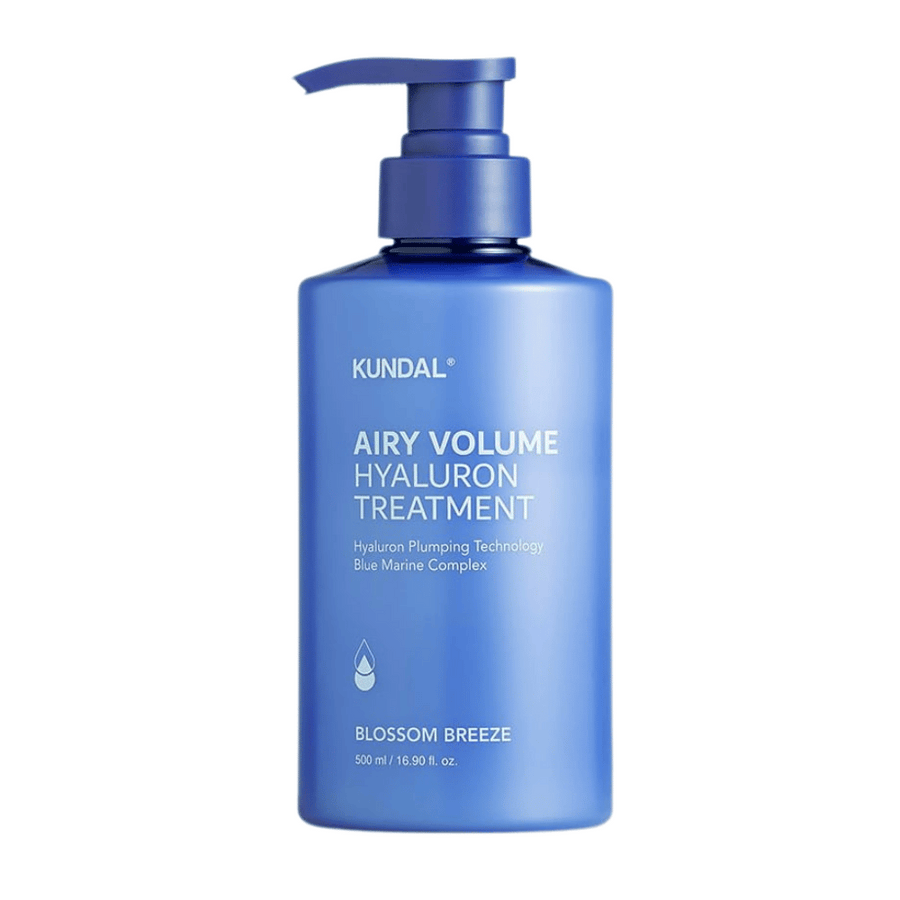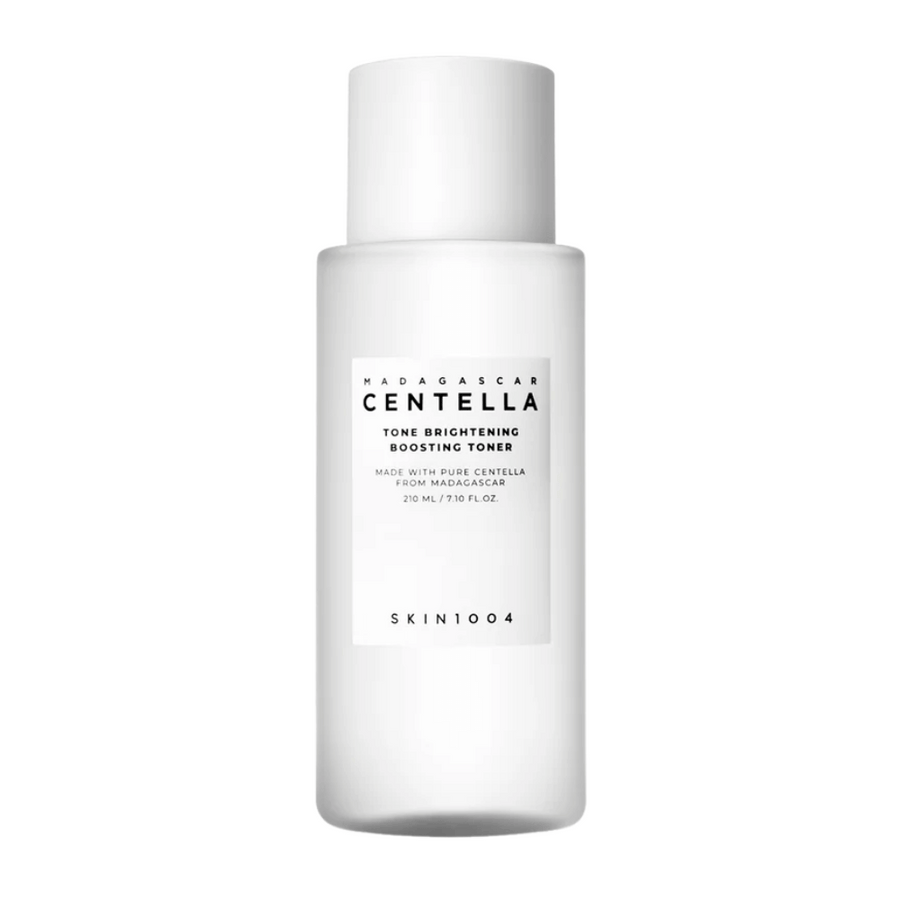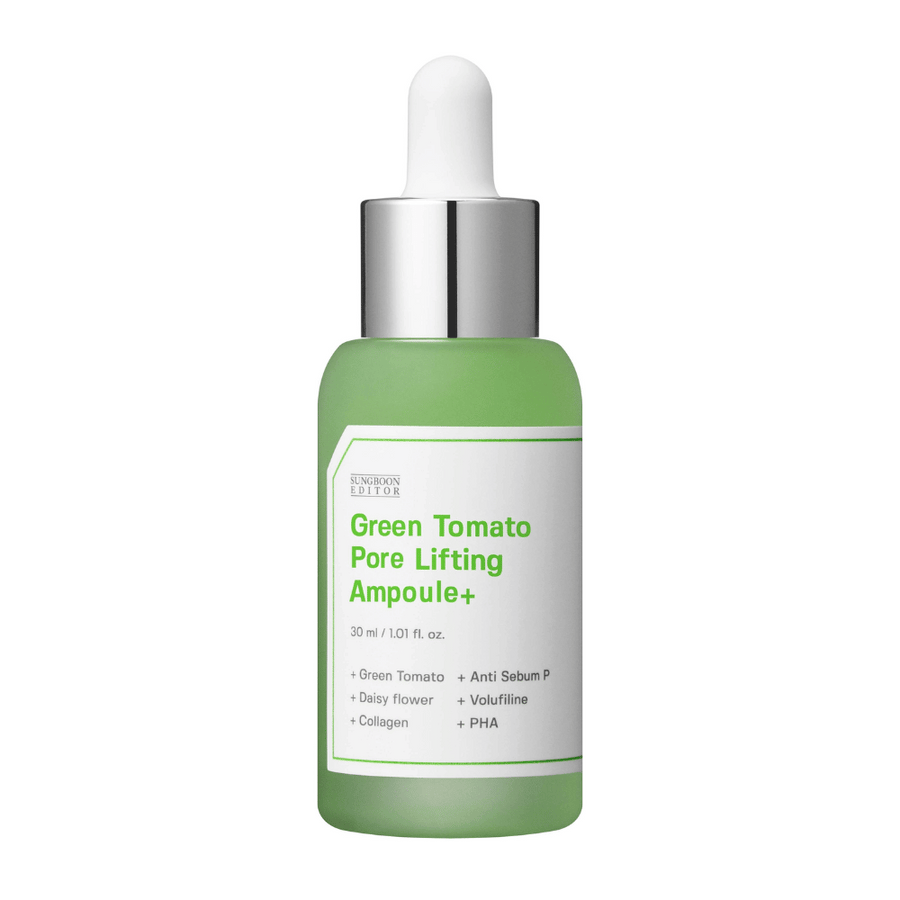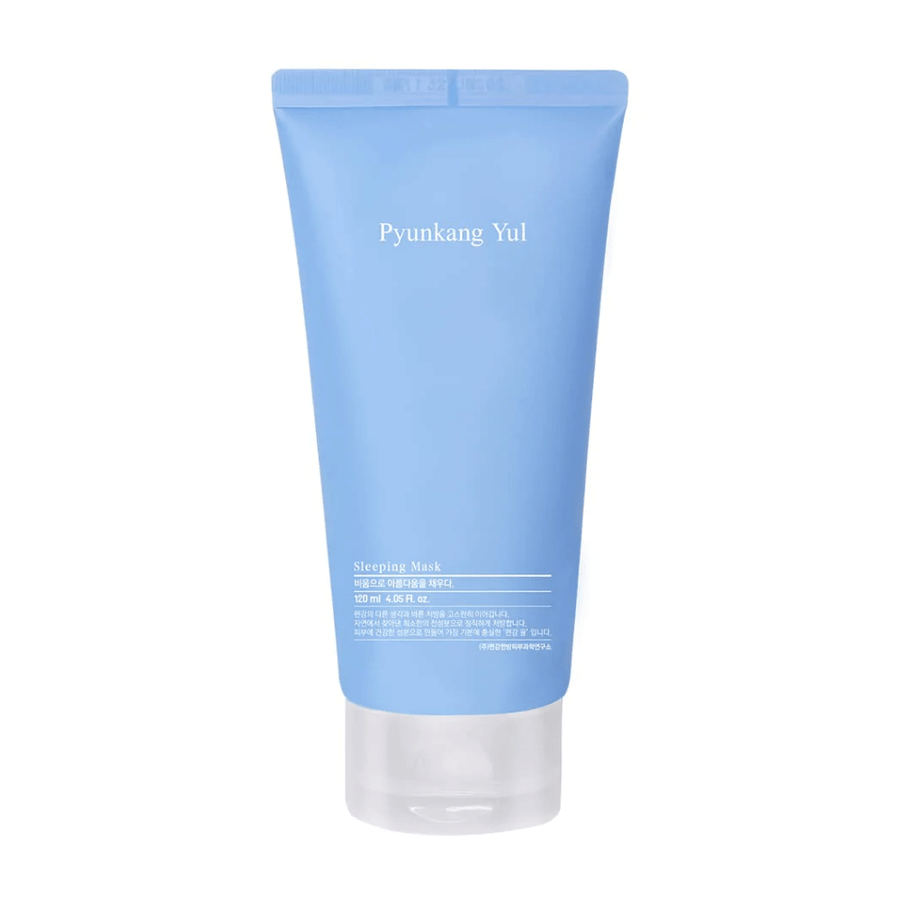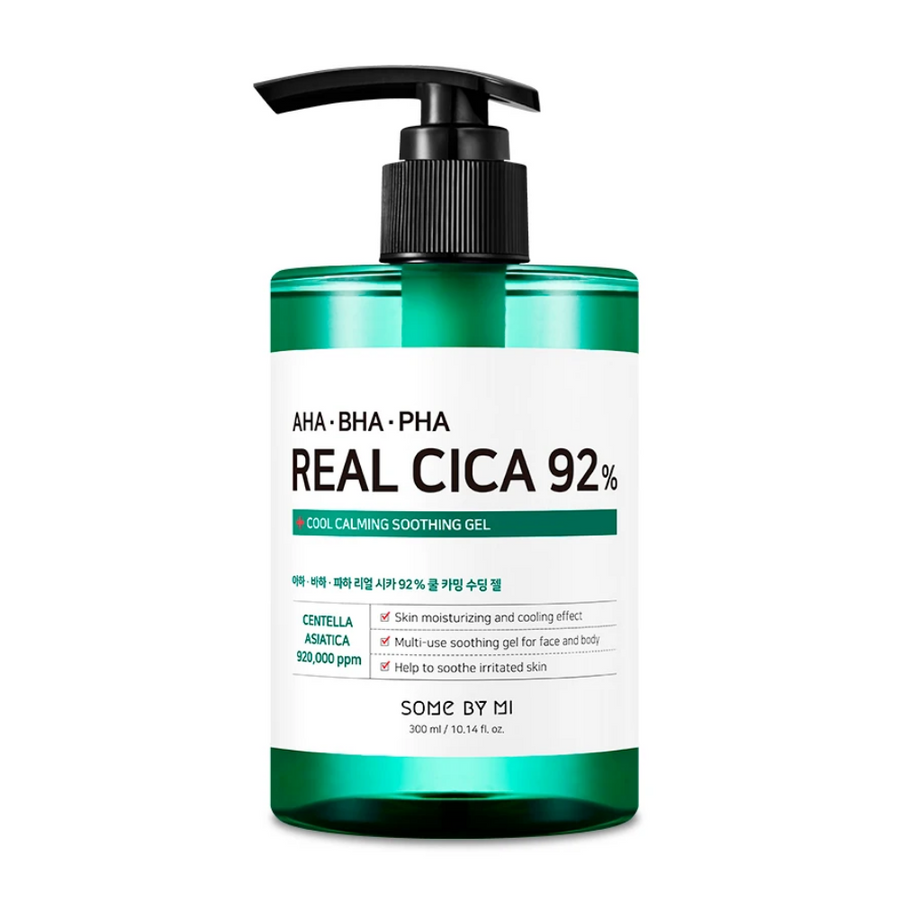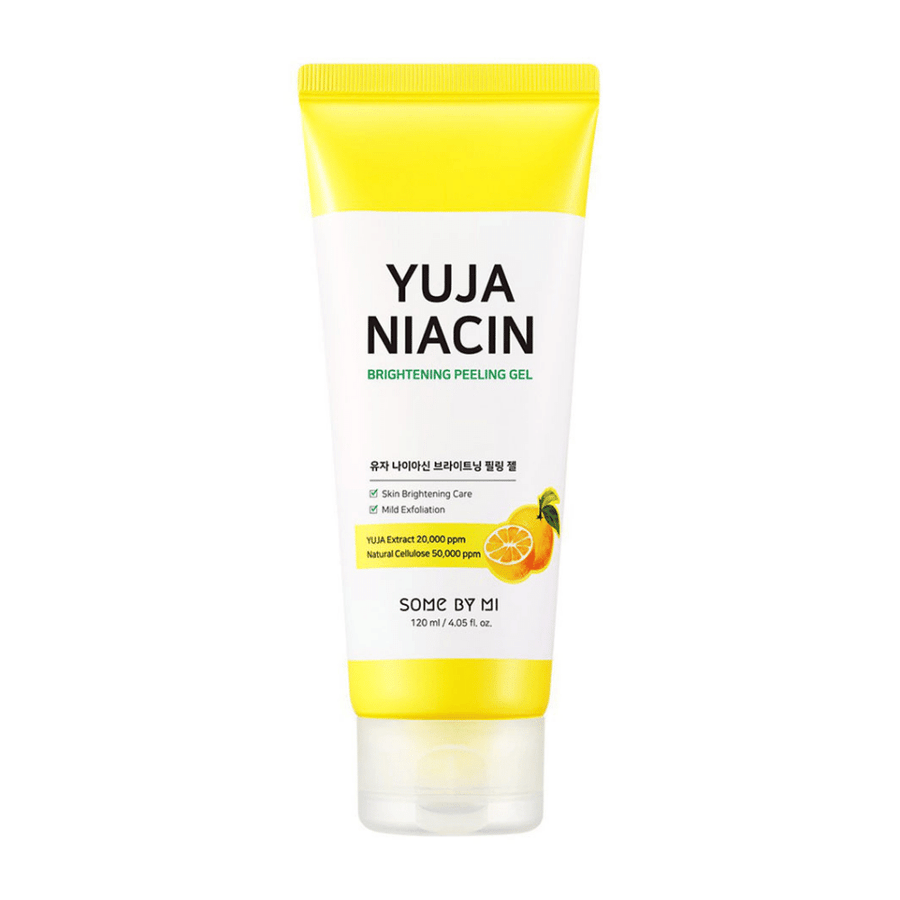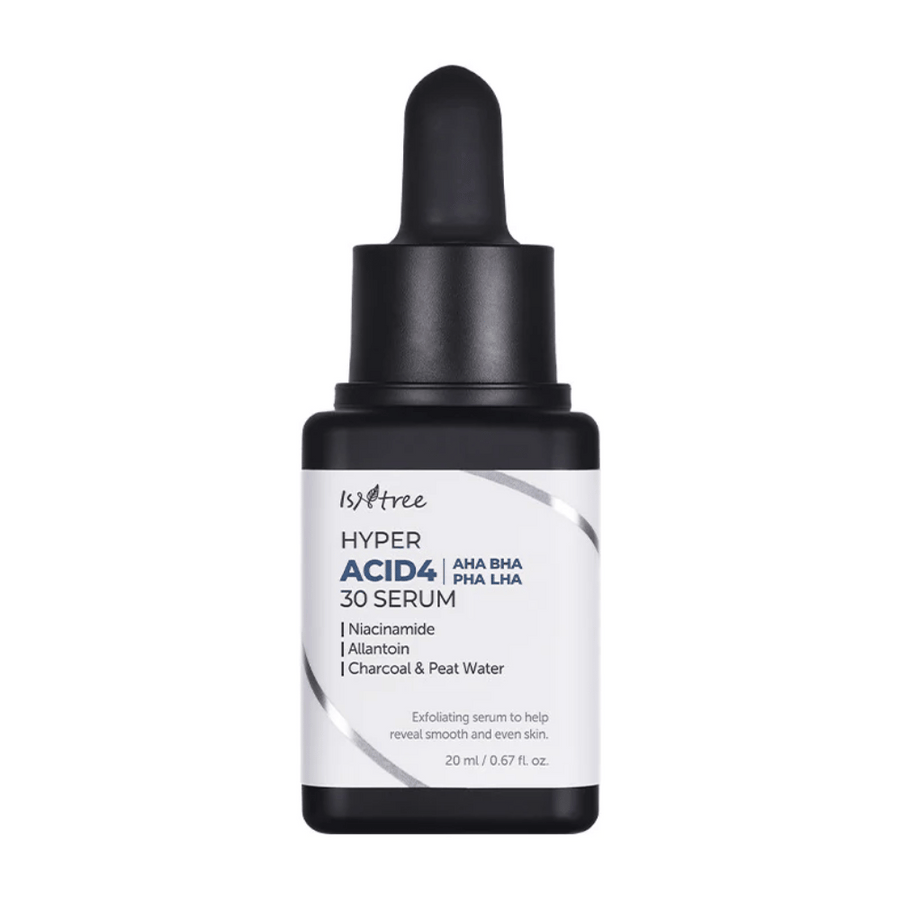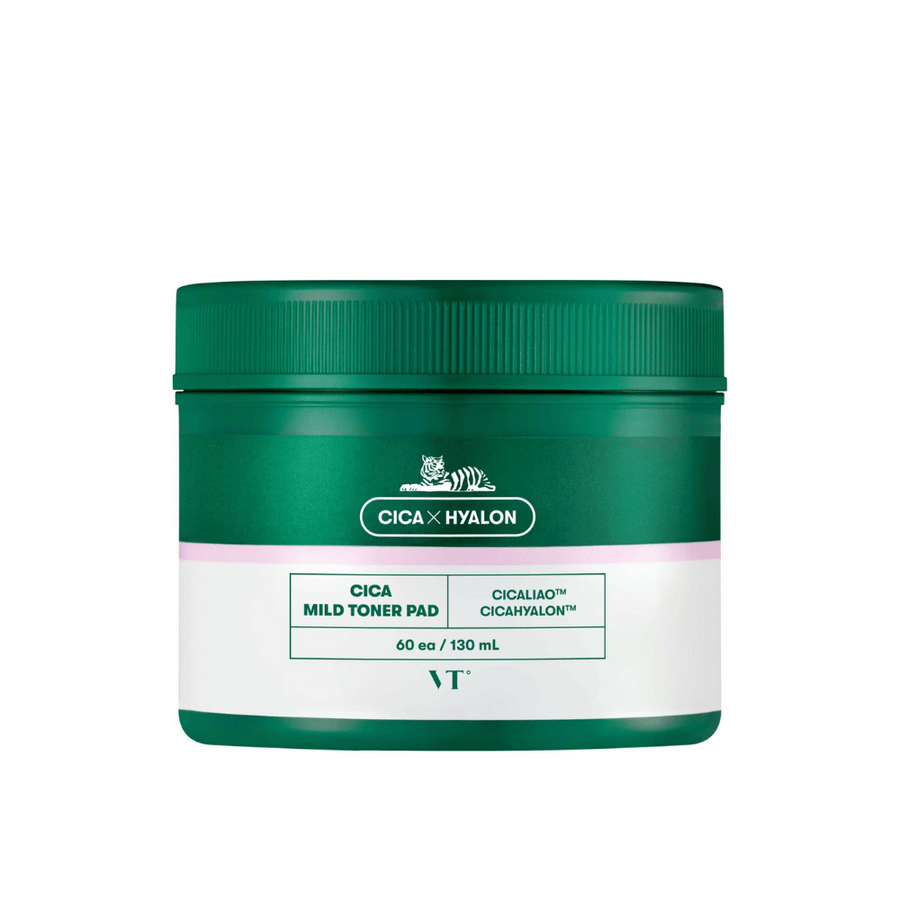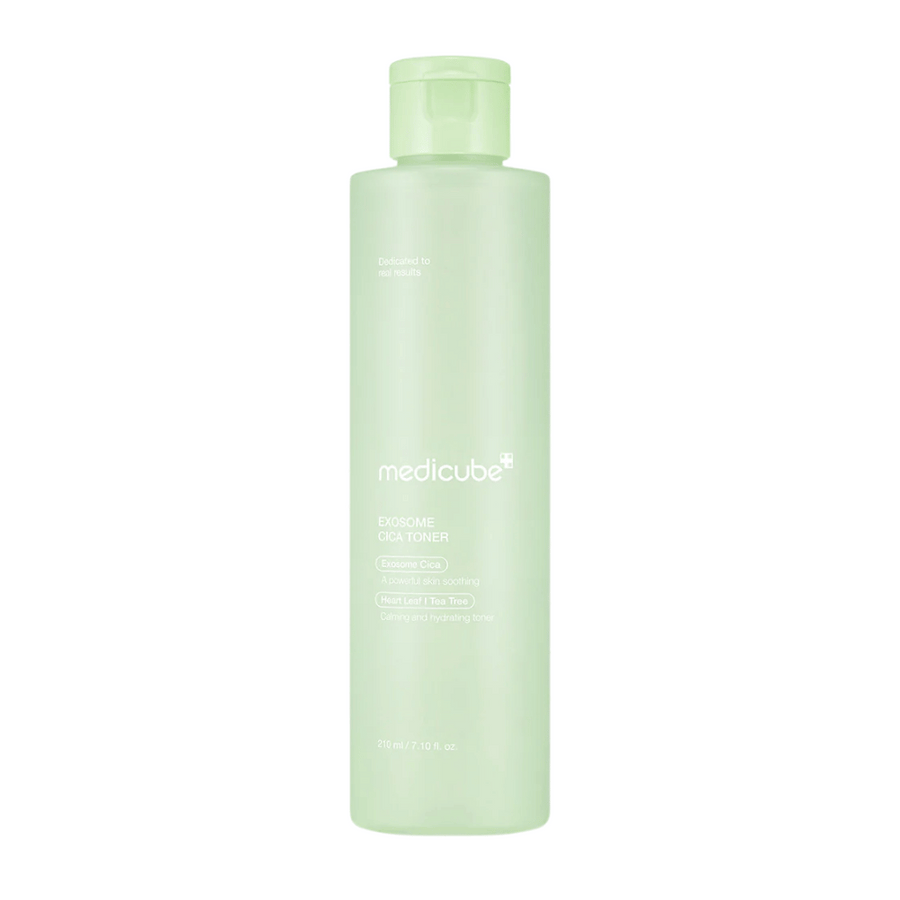
PHA acid, polyhydroxy acid, is a type of chemical exfoliating acid in skincare. It belongs to the same family as AHA and BHA acids but stands out by being extra gentle on the skin. When we talk about PHA acid, we usually refer to ingredients like gluconolactone and lactobionic acid, which are the most common PHA acids in skincare products. Just like AHA (alpha hydroxy acid) and BHA (beta hydroxy acid), PHA helps to exfoliate dead skin cells and stimulate cell renewal in the skin. But thanks to its unique structure, it does so in a gentler way than its sister acids.
PHA acids are sometimes called the “next generation AHA” because they have a similar effect as AHA, but without the strong irritation. The main difference lies in the molecular size. PHA has the largest molecules of the three types, which means it doesn't penetrate as deeply into the skin. Instead, PHA works primarily on the skin's surface and penetrates more slowly. This might sound less effective, but it means that PHA acid is milder and more gentle, perfect for those with sensitive skin or who want to exfoliate frequently. PHA exfoliates without causing as much irritation or redness as a strong AHA can.
In Korean skincare, PHA acids have become popular precisely because of their gentleness. Many Korean products such as exfoliating toners, cleansing pads and serums contain PHA to give the skin radiance in a gentle way. In short, PHA acid is a mild chemical peel that is suitable even for sensitive skin types, while effectively improving skin texture and clarity.
The difference between PHA, AHA, and BHA
All these acids are chemical exfoliants, but they differ in how they work and which skin they are best suited for. Here's a quick overview.
AHA Acid (Alpha Hydroxy Acid)
AHA acid is a water-soluble acid (e.g., glycolic acid, lactic acid) that works on the skin's surface. AHA peels away dead skin cells, increases cell renewal, and improves the skin's moisture level. It is effective against pigmentation spots, fine lines, and dry, dull skin, but can be quite strong, especially glycolic acid with its small molecular size. AHA suits most skin types except the most sensitive ones, and provides a more even skin tone and more radiance while binding moisture.
BHA Acid (Beta Hydroxy Acid)
BHA acid is an oil-soluble acid (salicylic acid) that can penetrate the pores. BHA dissolves sebum and dirt in the skin and exfoliates inside the pores, making it excellent for counteracting blackheads and acne. It has anti-inflammatory properties and reduces redness, so BHA works well on oily and combination skin with a tendency for pimples and clogged pores. BHA can also smooth out the skin's texture and treat post-inflammatory pigmentation (marks after acne) thanks to its exfoliating effect.
PHA Acid (Polyhydroxy Acid)
The most accessible and mild of the acids. PHA is water-soluble like AHA, but has larger molecules, which means it does not penetrate the skin as deeply or quickly. The result is a gentle exfoliation that gives the skin a nice glow without irritation. PHA acids also bind a lot of moisture to the skin and act as antioxidants. It is particularly suitable for sensitive and dry skin that cannot tolerate stronger acids, but can be used by anyone who wants a mild daily exfoliation. In other words, PHA is a gentle acid that provides many of the benefits of AHA/BHA – but without the same risk of redness, flaking, or dryness.
In short
AHA works on the surface of the skin with a focus on glow, moisture, and anti-aging. BHA works down in the pores against impurities and inflammation. PHA works on the skin surface like AHA but milder, while moisturizing and protecting the skin. Choosing the right acid depends on your skin type and skin problem, and for many with sensitive skin, PHA acid is the obvious choice.
Benefits of PHA Acid for the Skin
So why should you use PHA acid? Here are some of the most important benefits this ingredient offers.
Gentle exfoliation without irritation
PHA exfoliates the skin by dissolving the bonds between dead skin cells, similar to what AHA does, but at a slower pace. This means you get smoother, softer skin with improved glow without the redness or stinging that stronger acids can cause. The skin gets a fresh glow when the old, dull cells are polished away, and the new healthy skin comes forward. Because PHA acid works mostly on the skin's surface and not as deeply, it is well tolerated even by reactive skin. Many find that they can use PHA daily without problems thanks to its mildness.
Moisturizing effect
Unlike many other exfoliating ingredients, PHA is moisture-binding. PHA acids attract and bind water in the skin, which helps to moisturize and strengthen the skin barrier. This is a great advantage for those with dry or dehydrated skin who want to exfoliate without drying out the skin. A stronger acid can sometimes leave the skin tight and flaky, but PHA acids counteract this through their humectant (moisture-retaining) action. Gluconolactone, a common PHA, is for example known for both mild exfoliation and simultaneously restoring the moisture balance in the skin. The result is skin that feels both clean and pleasantly moisturized after treatment.
Antioxidant and anti-aging effect
PHA acids also function as antioxidants in the skin. This means they can help neutralize harmful free radicals and protect the skin against external stresses such as UV radiation and pollution. For example, gluconolactone protects the skin against sun damage and helps to strengthen the skin's protective barrier. Lactobionic acid, another PHA, has been shown to reduce the breakdown of collagen in the skin and thereby counteract signs of aging. Through regular use of PHA, one can thus see an improvement in fine lines and skin firmness over time. The combined exfoliating and antioxidant effect makes PHA a good anti-aging ingredient for sensitive skin that may not tolerate retinol or stronger acids. The skin becomes clearer, more even, and can maintain its youthful appearance longer with the help of PHA acid's protective properties.
Mildness and versatility
One of the main advantages of PHA acid is precisely that it is so mild. This makes it versatile and easy to incorporate into your routine. You can often use PHA products more frequently than you could with AHA/BHA, sometimes even daily, without compromising the skin's balance. Despite its mildness, PHA is effective, often described as a “gentle but not wimpy” acid. For those who are beginners with acids, or have experienced irritation from other active ingredients, PHA offers a gentle start. Additionally, PHA can be combined in products with other ingredients to broaden the effect. Many skincare brands (especially Korean) combine, for example, PHA with AHA and BHA in the same formula to create a more balanced exfoliation. Overall, with PHA you get exfoliation, hydration, and protection in one – an unbeatable trio for healthy skin. Some of our favorites with all three acids are the "Zero Pore One Day" serum and cream from Medicube.
Skin issues that PHA acid can help with
Thanks to its properties, PHA acid is particularly good for a range of specific skin conditions and problems. Here are some of the skin issues that can be improved with the help of PHA.
Sensitive skin (including rosacea and eczema)
PHA acid is made for those with sensitive skin that easily becomes red or irritated by regular peels. The mild exfoliation gently removes dead cells without damaging the skin barrier or causing inflammation. In fact, these acids are excellent for all types of sensitive and dry skin conditions, such as eczema or rosacea. Many with rosacea, who otherwise have to abstain from acids, can tolerate PHA in low concentrations. PHA helps to gently refine the skin surface and even out redness over time, while its anti-inflammatory and moisturizing properties soothe the skin. If you have sensitive skin that has previously reacted poorly to AHA or BHA, PHA may be the key to still gaining the benefits of exfoliation without triggering irritation.
Dryness and surface dryness
For those with dry skin (lack of oil) or surface dry skin (moisture-deficient skin), PHA acid is a lifesaver. Dry and flaky skin is partly due to dead skin cells accumulating on the surface, which can give a rough, dull feeling. PHA acid's mild peel removes the dry, flaky skin cells and helps the skin absorb moisture better. At the same time, PHA binds moisture in the skin, addressing the very cause of surface dryness. The combination of exfoliation and hydration makes PHA particularly suitable for treating flaky skin and dryness lines. After some time of use, many find that the skin feels softer and more elastic, without the tightness that stronger acids can give. PHA acid is also a good choice during the winter months when the climate makes the skin drier and more sensitive; it can be used to keep the skin healthy and hydrated despite cold weather.
Pigmentation spots and uneven skin tone
Regular exfoliation with PHA can help reduce hyperpigmentation (such as sunspots, age spots, or acne marks) albeit at a slightly slower pace than powerful AHA acids. By gently removing the top layer of dead cells, PHA helps new, evenly pigmented cells emerge. Over time, this can make pigmentation spots less noticeable and provide a more even skin tone. Its antioxidant properties can also inhibit some of the damage caused by UV radiation, preventing the formation of new sunspots. Although AHA (like glycolic acid) is the "gold standard" for treating pigmentation changes, PHA is an excellent alternative for those who cannot tolerate AHA or want a milder maintenance treatment. You can advantageously use PHA acid to maintain results after a stronger peel and keep your skin tone clear and bright over time.
Milias and Clogged Pores
Milias are those small white keratin cysts that often appear around the eyes or on the cheeks. They occur when keratin (a protein in the skin) becomes encapsulated beneath the skin surface. Regular exfoliation is key to preventing and reducing milias, and PHA can be helpful here. A PHA acid like gluconolactone works on the skin's surface to dissolve the binding "glue" that causes dead cells to clump together. By removing these cells, it becomes harder for keratin to get trapped and form milias. PHA is mild enough to even be used in products around the eye area, something that is otherwise unusual with acids. For example, there are exfoliating toners with PHA that are safe enough to apply under the eyes to counteract milias. PHA can also help keep pores clean from superficial blockages (such as whiteheads). Although BHA is better at penetrating deep into the pores, PHA can support a clearer skin by preventing dead skin cells from blocking pore openings. For those who have milias or easily get small bumps, especially if your skin is too sensitive for strong acids, PHA acid can be very beneficial gradually and gently.
Mature Skin
Older skin types, which may be both dry and a bit thinner, greatly benefit from PHA acid. Mature skin may have difficulty tolerating strong anti-aging treatments but still needs exfoliation to maintain radiance and reduce lines. PHA is ideal here as it both stimulates renewal and cares for the skin at the same time. The gentle exfoliation can help blur fine lines and unevenness by increasing cell turnover in the skin, while moisture retention plumps the skin so that wrinkles appear less visible. Additionally, PHA's antioxidants protect the skin's collagen from degradation, which is important for counteracting sagging and wrinkle depth. PHA thus has a place in the anti-aging routine, especially for those who cannot tolerate retinol or strong glycolic acid. An extra bonus is that PHA can often be used year-round (with sun protection, of course), so even mature skin can continue to enjoy the benefits of exfoliation without interruption. In short, for aging skin that is sensitive or dry, PHA acid provides a fine balance between effectiveness and tolerance, and the skin can look healthier, smoother, and more youthful for longer.
How to Use PHA Acid in Your Skincare Routine
One of the strengths of PHA is that it is relatively easy to integrate into an existing skincare routine. Here are some tips and guidelines for using PHA acid in the best way.
Choose the right product and step
PHA acid is available in a variety of products, from exfoliating toners, serums, and creams to peeling pads and cleansers. Consider what fits best into your routine. A popular option is a PHA toner that is applied directly after cleansing, before applying serum and moisturizer. There are also PHA serums that can be used as an exfoliating step a few evenings a week, or moisturizers with PHA for daily maintenance. If you use a PHA cleanser (e.g., a mild peeling gel), it replaces your regular cleanser and provides a light exfoliation during washing. Regardless of form, apply the PHA product on thoroughly cleansed skin for the best results, so the acid can truly reach the skin surface.
Start slowly and increase gradually
Even though PHA is milder than other acids, it's wise to gradually acclimate your skin. Start by using your PHA product 2–3 times a week, preferably in the evening, to see how your skin reacts. If the skin tolerates it well (no redness, flaking, or discomfort), you can gradually increase the frequency. Many can eventually use PHA every day or every other day without problems. However, always listen to your skin; if it feels irritated or extra dry, reduce usage for a while. Also, remember not to introduce several new active products at once. If you start with PHA, potentially pause other potent treatments until you see that the skin is doing well with the acid.
Combine with moisture and barrier strengtheners
After applying a PHA acid, it's good to follow up with a hydrating serum or directly with a softening cream. This helps to lock in the moisture that the PHA acid has drawn into the skin and reduces the risk of dehydration. Even though PHA has moisture-binding properties itself, the skin always needs extra moisture and nourishment after exfoliation. Ingredients like hyaluronic acid, glycerin, panthenol, or ceramides in subsequent products are excellent complements, as they further soothe and strengthen the skin. Protecting the skin with a cream after acid application also ensures that the skin barrier remains intact and that the new fresh skin cells are well.
Avoid mixing too many acids at once
While PHA can indeed be combined with other acids in the same product (formulated by the manufacturer), when you use several different products yourself, you should be a bit cautious. Layering multiple exfoliating acids, such as an AHA mask followed by a PHA serum, can over-exfoliate the skin. Signs of over-exfoliation include redness, irritation, unusual dryness, or skin feeling like sandpaper. To avoid this, preferably use one acid product at a time in your routine (or use, for example, AHA one day and PHA the next). If you want to combine acids, do so according to recommendation (some brands have kits where AHA/BHA/PHA are included in different steps, intended to be used together). If you're unsure, feel free to consult a skincare therapist. Keep in mind that other active ingredients like retinol and vitamin C can also stress the skin if combined inappropriately with acids. A rule of thumb: keep it simple on the days you exfoliate, PHA plus moisture and protection go a long way.
Always use sunscreen
This cannot be emphasized enough, sunscreen (SPF) is a must when using acid products. All exfoliating acids, even mild PHA, make the skin more susceptible to the sun's UV rays because they remove the outer protective cell layer. So make sure to apply sunscreen on your face every morning (at least SPF 30, preferably SPF 50) when you have used PHA acid the night before. If you use PHA in the morning (which some PHA day creams allow because they are so mild), sunscreen is even more mandatory directly on top. Reapply your SPF during the day if you are outdoors for a long time. This way, you protect your skin from burning or getting new sun damage while benefiting from the advantages of PHA acid. A positive aspect of PHA is that it is mild enough for many to continue using even in summer, provided that sun protection is carefully managed. However, if you plan to sunbathe intensively, it might still be wise to pause exfoliation altogether to avoid the risk of hypersensitivity. Common sense and SPF are key here!
Be attentive to your skin's signals
Finally, remember that every skin is individual. Tingling or slight tickling upon application is not uncommon with acids, but it should not burn or hurt. If your skin becomes red, irritated, or starts to peel a lot when using PHA, take a break. Moisturize your skin properly and let it recover. Although PHA is gentle, overuse or combination with other strong products can stress even the best skin. Use with moderation and love, and your skin will remain balanced and happy.
Cleanse, apply your PHA product as directed, start a couple of times a week, increase as needed, moisturize, and protect with SPF. This is the recipe for a safe and effective PHA routine that gradually improves your complexion.
What skin types are suitable for PHA acid?
One of the best things about PHA acid is that almost all skin types can benefit from it. Thanks to the acid's mildness, there are few who cannot use PHA. But certain skin types and situations particularly benefit from the properties of PHA acid.
- Sensitive skin. Without a doubt, PHA acid is optimal if you have sensitive skin that reacts easily. Where other acids can cause redness and irritation, PHA stays on the surface and exfoliates gently. Sensitive skin (including those with rosacea or perioral dermatitis) can usually tolerate PHA much better than AHA/BHA. PHA becomes a safe introduction to chemical peeling, providing radiance and softness without compromising the skin barrier.
- Dry and dehydrated skin. For skin that lacks both oil and moisture, PHA is a fantastically adapted acid. Dry skin can exfoliate with PHA to remove the outer dry layer, while the moisture-binding aspect helps the skin stay hydrated. If you have surface-dry skin (perhaps tight but still shiny/oily in some areas), PHA can help by gently removing dry flakes and better locking in moisture. Many with dry skin find that their skin feels clearer and more receptive to subsequent creams after a PHA peel, compared to other acids that can sometimes dry out further. So if you have dry/combination skin that needs exfoliation without losing moisture, then PHA is the way to go.
- Mature skin. As mentioned above, mature skin often thrives with PHA acids. Although PHA is suitable for all ages, it is especially good for those who are starting to get lines, pigmentation spots, or just generally want to maintain elasticity and radiance in the skin. Mature skin is sometimes thinner and more sensitive, so it benefits from an acid that doesn’t 'mess things up' too much. The PHA acid provides a fine exfoliation that brings out the glow in the skin and can soften the appearance of fine lines. At the same time, it protects against external attacks, which slows down premature aging. And because it doesn’t stress the skin significantly, mature skin can use PHA regularly for continuous improvement. In short, PHA helps aging skin look healthy and vibrant without the risk of overloading.
- Normal or combination skin that wants maintenance. Do you have basically normal skin, or perhaps combination skin, and want to keep your skin as balanced as possible? PHA can be an excellent addition to the routine here as well. Normal skin might not 'need' aggressive exfoliation, but a little gentle polishing with PHA can add extra radiance and prevent the skin from becoming dull. For combination skin that is partly sensitive or surface dry, PHA works perfectly in the dry areas to keep them soft and spot-free, without irritating the oilier zones. The PHA acid is so balanced that it suits virtually all skin types, adapting to the needs. If you have areas with blackheads or a lot of acne, you can complement with BHA on those specific spots and use PHA on the rest of the face. But otherwise, a normal/combination skin can absolutely use PHA all over as a daily glow-booster.
- Oily and impure skin (that is sensitive). Generally, BHA acid is recommended for very oily and acne-prone skin, but there are cases where even oily skin is sensitive or dried out by acne treatments. In those cases, PHA can be a gentler choice for still getting exfoliation. The PHA acid will not penetrate and dissolve sebum like a BHA, but it can keep the surface clean and smooth, which contributes to fewer clogged pores. If your skin does not tolerate salicylic acid, you can try PHA as a milder alternative. For some people with mild acne and sensitivity, PHA works better in the long run, avoiding flaking and irritation, which in itself can help the skin heal acne faster. However, remember that for deeper blackheads, BHA is usually needed, and PHA can be seen more as a complement in an oily skincare routine if the tolerance for BHA is not there.
It is common to say that PHA acid suits all skin types but is most beneficial for sensitive, dry, and mature skin. It is an excellent 'entry-level acid' for beginners and a safe bet for those who have had bad experiences with other acids. As always with skincare, it is important to start from your own needs, but with PHA, the chance is high that your skin will like it, whether you are 20+ with combination skin or 60+ with dry skin. The secret lies in it being gentle yet effective, a combination that makes PHA unique.
Why we love PHA in Korean skincare
PHA acid is a fantastic ingredient for those who want to exfoliate the skin and achieve more radiance without risking irritation. It differs from AHA and BHA through its mildness and moisturizing ability, yet still delivers results in the form of a more even skin tone, softer texture, and protection against aging. For the Swedish consumer, especially those who love Korean skincare, PHA acid offers the best of both worlds: high-tech efficiency and gentle care for the skin. Try incorporating a PHA product into your routine and experience the difference for yourself – your skin can achieve the glow of exfoliation while feeling calm and hydrated. Just don't forget the sunscreen, and you'll have a winning skincare routine year-round with PHA acid in the spotlight!





